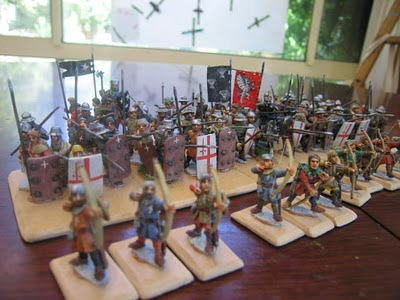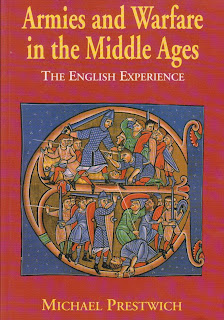Rebel Left Ward - London Foot (1): Modelling

This is the most daunting painting task I have set myself - a unit of 70 spear and 12 archers. Construction of the figures alone took over a week (a busy life schedule). The unit is to represent the London levy or trained militia men if you prefer. Whilst they ultimately fell to the royal cavalry I suspect it was no walk-over and contemporary chronicle accounts are most likely a simplified account of what transpired. Whilst these men had not fought in an open battle of the likes of Lewes, they were no strangers to armed conflict when it came to controlling London and resisting would-be-oppressors including the King. Charged with protecting the city, I have depicted them as well armed and relatively drilled troops. The manufacturers represented in this unit include almost even proportions of Kingmaker Miniatures , Curtey's Miniatures , Essex Miniatures , Foundry , Gripping Beast and Mirliton Miniatures . I have swapped shields, spears, made other spears, cut a...









